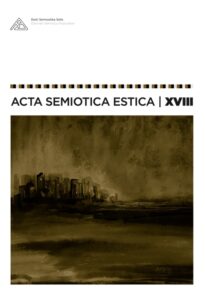Helimaastike roll ja tähendus Tartu puhkekohtades
The role and meaning of soundscapes in Tartu’s resting places
Author(s): Keily Tammaru, Leonora Palu, Oskar Harding, Timo MaranSubject(s): Energy and Environmental Studies, Semiology, Sociology, Rural and urban sociology, Environmental interactions
Published by: Eesti Semiootika Selts
Keywords: soundscapes; resting places; Tartu; urban semiotics; ecosemiotics; ecofield; Mats Widgren; Juri Lotman;
Summary/Abstract: Soundscapes are valuable material for describing the city environment qualitatively. Each city has non-formal resting places where people like to stop, however they might not be determined by visual or cultural context, but by the soundscape. We studied soundscapes in people’s favourite resting places in Tartu. We delimited the ‘resting place’ as a very concrete point for stopping or sitting down. Based on a quiz, we identified the seven most popular resting places, which we chose for further study. In these sites, we made notes about all the surrounding sounds or a periood of 10 minutes, in addition, we identified more important visual or cultural dominants. We used Mats Widgren’s typology which involves form, function, process and context. To describe form and process more precisely, we distinguished biophony, geophony, antropophony and technophony, and used Juri Lotman’s typology of socio-communicative functions. Soundscapes could be distinguished as being either nature dominant or human and social dominant. In addition, visual and cultural dominants influence acoustic dominants both in their interpretations and meanings, but also by influencing which of the sounds will be primarily in focus for the receiver. According to the quiz responses, people expect resting places to be quiet and car free, but our observations show that there are considerable sounds, including traffic noise, in all resting places. On the other hand, people value activities like running, socializing or observing other people. People also consider auto communication and self-reflection to be important while staying in a resting place. In the city, preferences for environment types while stopping to have a rest, vary a lot, and according to that micro environments in the city should also be diverse and varied. We also found that it is preferably to study soundscapes in relation to features of the visual environment.
Journal: Acta Semiotica Estica
- Issue Year: 2021
- Issue No: 18
- Page Range: 52-71
- Page Count: 20
- Language: Estonian

